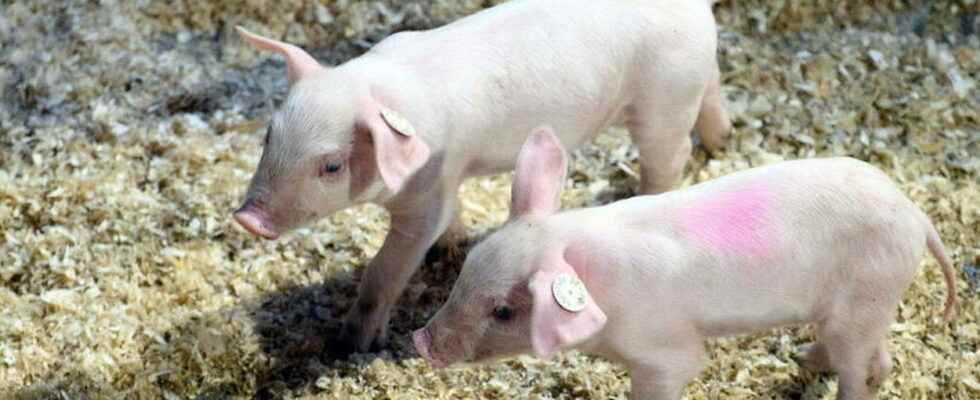Lswine flu continues to spread at high speed in Europe, particularly in the east where recent outbreaks have raised fears of a wider spread of the virus. Although harmless to humans, African swine fever remains terribly contagious in animals. “The number of cases and newly affected areas are increasing despite efforts, and countries are having great difficulty controlling and eliminating the disease,” said Gregorio Torres, head of the scientific department of the World Organization for Animal Health (OMSA). ), interviewed by Agence France-Presse.
Since the beginning of the year, 285 outbreaks of African swine fever (ASF) have appeared on European farms, with nearly 71,000 cases recorded by OMSA on 1er september. The virus circulates mainly on the eastern part of the continent, in Romania, which totals 197 of these outbreaks, in Moldova and in western Russia, where five new outbreaks were detected in farms last week.
Present in wildlife, the disease also appeared in Italy, in a farm in the Rome region at the beginning of June, and in Germany in May and then in July, with two outbreaks in the Länder of Mecklenburg-Western Pomerania and Lower Saxony (North) and nearly 2,800 slaughtered farm animals. Despite their proximity, France and the Netherlands have been spared so far.
A fatal disease for animals
Without treatment, African swine fever is generally fatal for animals, and leads in its wake to a number of preventive slaughters to prevent its spread. In this sense, it poses a lasting threat to the European pork industry, “the world’s leading exporter of pork and pork products, with nearly 5 million tonnes exported each year”, underlined the European Food Safety Authority. food (EFSA) at the end of July.
READ ALSO China: after the coronavirus, a swine flu?
Faced with a rate of spread described as “alarming”, the agency launched its third communication campaign this summer with the authorities of 18 European countries, to raise awareness among breeders, veterinarians and hunters of the mode of spread of the disease. OMSA, which coordinates countries’ efforts to combat this type of epizootic, is monitoring the situation in Ukraine in particular, where two outbreaks appeared in livestock farming in June and then a third in July. The Russian invasion of Ukraine in February caused major population movements, with herders forced to abandon their animals and veterinarians cut off from certain areas, which favors the proliferation of diseases, he said. added.
A “global threat”
Endemic in sub-Saharan Africa, African swine fever affects pigs, wild boars and warthogs. Not transmissible to humans, the virus can survive for more than two months in meat and cold cuts from sick animals. A farm affected by the virus is usually decimated in a short time, and veterinary authorities must ensure strict quarantine and culling of the animals.
Arrived in Europe in the 1960s and then eradicated, African swine fever returned there in 2007 via Georgia, indicates OMSA. Present on all continents, the organization describes it as a “global threat”, with 564 outbreaks detected since January. Almost all of the 78,000 reported cases appeared in Europe, then to a lesser extent in Asia.
Very contagious, the virus can pass from one country to another via “infected foodstuffs or a contaminated medium, such as a salami sandwich” for example, details Gregorio Torres. The virus can indeed survive for entire weeks in the packaging of a contaminated sandwich and if this packaging is, for example, abandoned on a motorway service area, it could be sniffed by wild boars, who will disseminate it as they travel, on infrastructures such as railways or even in service stations.
Among the 39 countries affected since 2020, some have succeeded in eradicating it at the cost of heavy efforts, such as Belgium or the Czech Republic. At the beginning of June, Vietnam announced that it had succeeded for the first time in developing a vaccine against African swine fever, in partnership with American researchers. It will initially be reserved for its domestic market. “It would be a good tool, but it’s not the only solution”, nuance Gregorio Torres. “We need to improve international coordination, biosecurity, strengthen the veterinary capacities of countries and continue prevention with farmers. »
